(6) The collar:



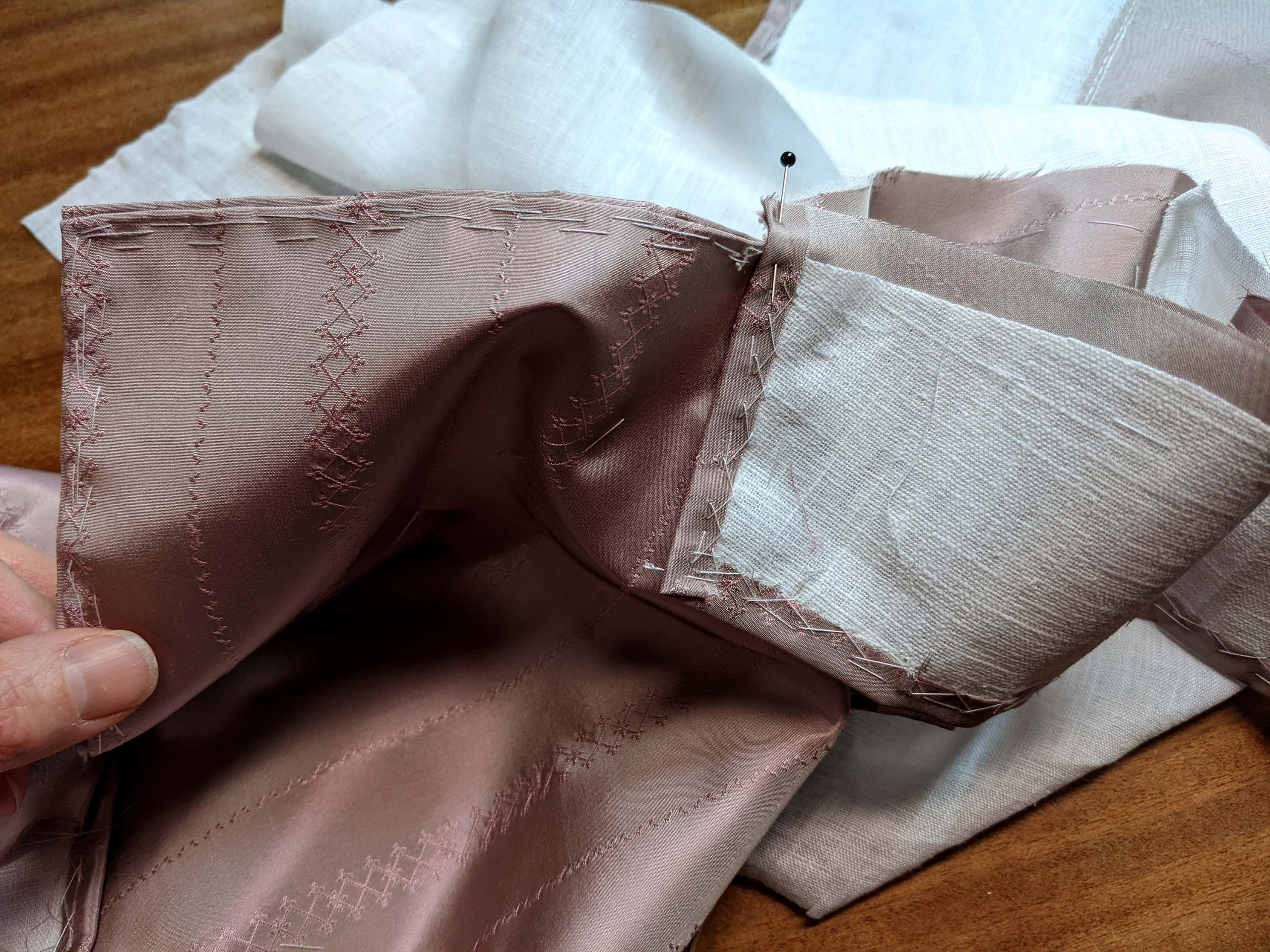





(6) The collar:








Welcome back for a new sewing pattern! I made this dress last year in autumn to attend two intimate and small events, a soiree and a Napoleonic ball.
It was not my intention to make a Bridgerton inspired dress, I just fell in love with this extant gown https://www.photo.rmn.fr/archive/15-523923-2C6NU0AOS8H16.html from the Musée national des châteaux de Malmaison & Bois-Préau in France.
I´m sorry, that I didn´t made lots of pictures during the sewing process because I was in a hurry, I made a mistake when cutting the skirt, but I love the result. Due to the newest release of Bridgerton Season 2 I don´t want to withhold this pattern from you.
Visit my shop if you are interested in the sewing pattern!
Subscribe to my newsletter to stay informed about new patterns and promotions.
Let´s start with sewing! Just some considerations before we´ll start. Take care that there are no extra pattern pieces for the skirt. The skirt is made from panels of fabric, cut into rectangle and trapezoidal pieces. The following diagram shows how to cut the skirt from different fabric widths.
This is another overview how to estimate the width of your panels. The measurements do not necessarily have to be observed exactly. The width of the front panel should be 1,5 times the length from mark ② to mark ② on the waistband. The side panel should measure about 2 times the length from mark ② to mark ③, and the back panel about 4 times from ③ to ④. (When sewing a larger size with 35” (90cm) wide fabric, you´ll have to piece one of the side panels as shown on the diagram – piecing is period). The remaining fabric strips will be used for the box pleated frill at the hem.

(1) The importance of a mock-up: Quite sloppy pics of my mine. You can see the additional length at the front to fit over the bust.

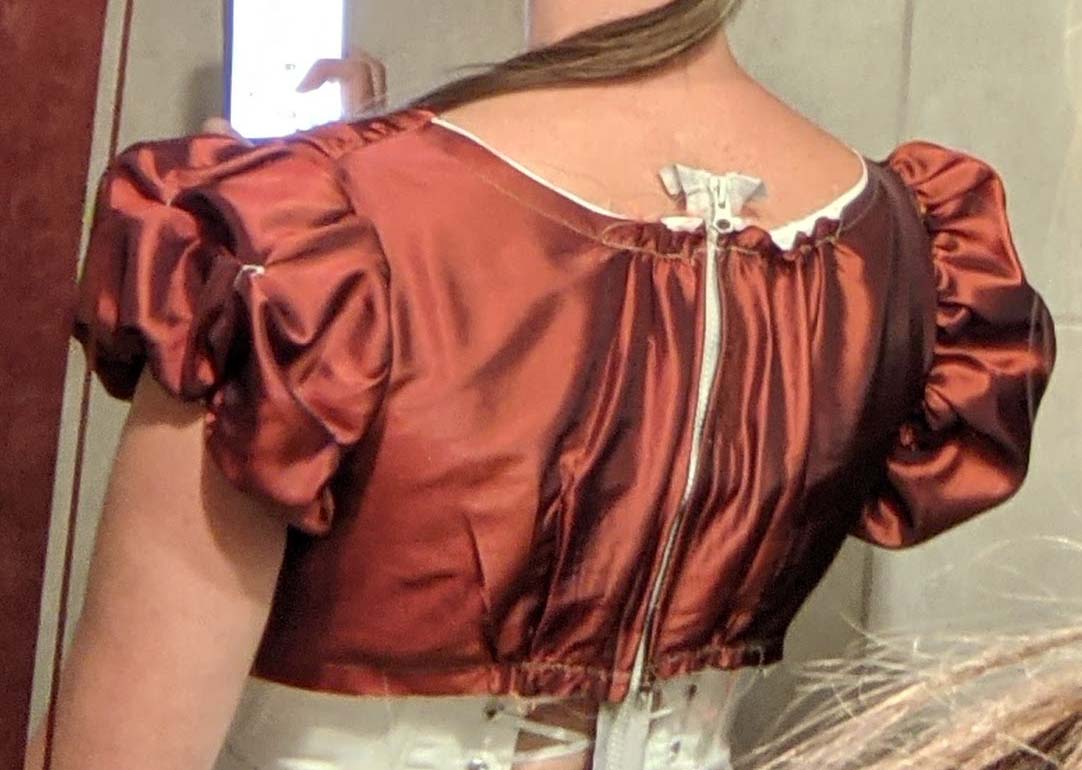

Part1 – Neck and Collar
Part2 – Sleeves
(12) Cut stripes from a sheer fabric for the ruffles, about 1 ½ to 2 times as long as the edges to be trimmed and about 2 ¾” (7cm) wide. Roll hem the two short and one long edge and gather the remaining raw edge.
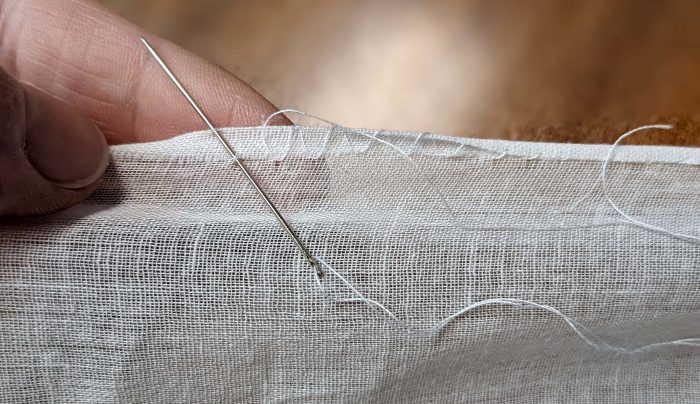
Take the cotton tape, cut to the length of the edge to be trimmed, and fold in half lengthwise, turn in a narrow seam allowance along the short edges. Slide the gathered edge of the ruffle between the two layers of the tape and stitch in place through all layers. The ruffles are attached to the inside of the neck opening and cuffs with a running stitch and can be removed for washing easily.



(5) The sleeves are gathered between the marks (3) and lined up with the shirt, right sides together, matching all marks (3) and (4). On the picture you can see my back stitch, made from the sleeve side. In the end, it would have been better to sew from the shirt side, to hide the longer and uneven stitches on the back with the flat felled seam later. On the second sleeve I made my back stitch from the right side, but unfortunately I didn’t take a picture.

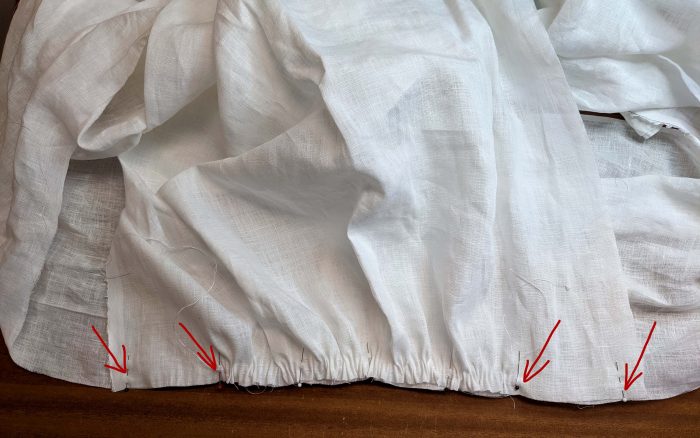
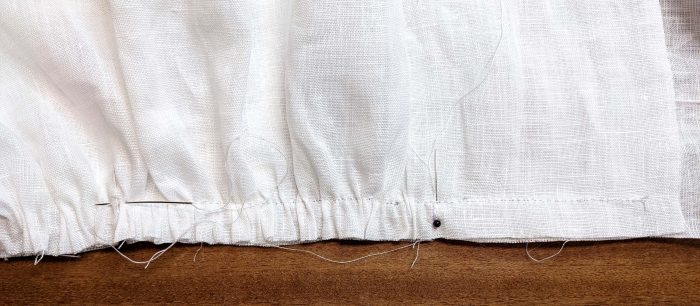
(6) Time to sew the side and sleeve seam. To get a nice result when making all seams flat felled seams later, I stitched all seams from the front side (front bodice + front sleeve), starting and stopping at marks for the vents and underarm gusset. After sewing, I used a ruler to check that my opening for the gusset was the right size.
Continue reading
I´m back in the 1790´s! No special occasion is coming up, just that I planned to finish the 1790´s men´s pattern series with a shirt which I have so far neglected.
Men´s shirts are quite simple garment´s, made from rectangular pieces of fabric and have changed less than other garments during the last centuries. Therefore, the shirt in this pattern can be used for costumes over several decades, from about 1750 to 1830.

Gussets at the underarm and shoulder slope gave the shape needed. The shoulders were reinforced with additional patches, attached to the inside of the shirt with a fell or slip stitch. There are several ways to insert gussets, attach shoulder patches or cast all the raw edges, especially at the armhole. My templates are three extant men´s shirts displayed at the “Germanisches Nationalmuseum” in Nürmberg, Germany.
Let´s start sewing, following the pattern instructions step by step.
You prefer a sewing pattern rather than a diagram? Go to my Shop and get yours!
(1) Of course, my step #1always is to cut and prepare the pieces from fabric, marking all the notches. I made the shirt from a fine linen. When sewing with linen, it´s important to pre-wash the fabric at least with the same temperature as you´re going to wash the shirt later. Cutting linen in the straight grain can be tricky as well, I prefer to pull out single threads. This can be boring and time consuming, but in the end it´s worth it.
(2) This is the shirt bodice, slashed horizontally for the neck opening, and slashed down the center front at the chest. Along slash at the center front, a narrow seam allowance is double-turned in and fell stitched in place. To hold the edge of the fabric straight when sewing, I used a plastic clamp from the hardware store (my third hand).

(3) When I first started sewing a 18th century men’s shirt, the most difficult thing I found was the shoulder patches and gussets. Because of this, I’m going to show it in great detail.
Take the shoulder gussets and turn in the seam allowances along two consecutive edges, or along all edges as shown in the pictures.

Slash the shoulder patch and turn in the seam allowances (except along the armhole edge) and insert the gusset as shown. It is shown and described a little differently in the instructions, only at the end the result will be the same.

